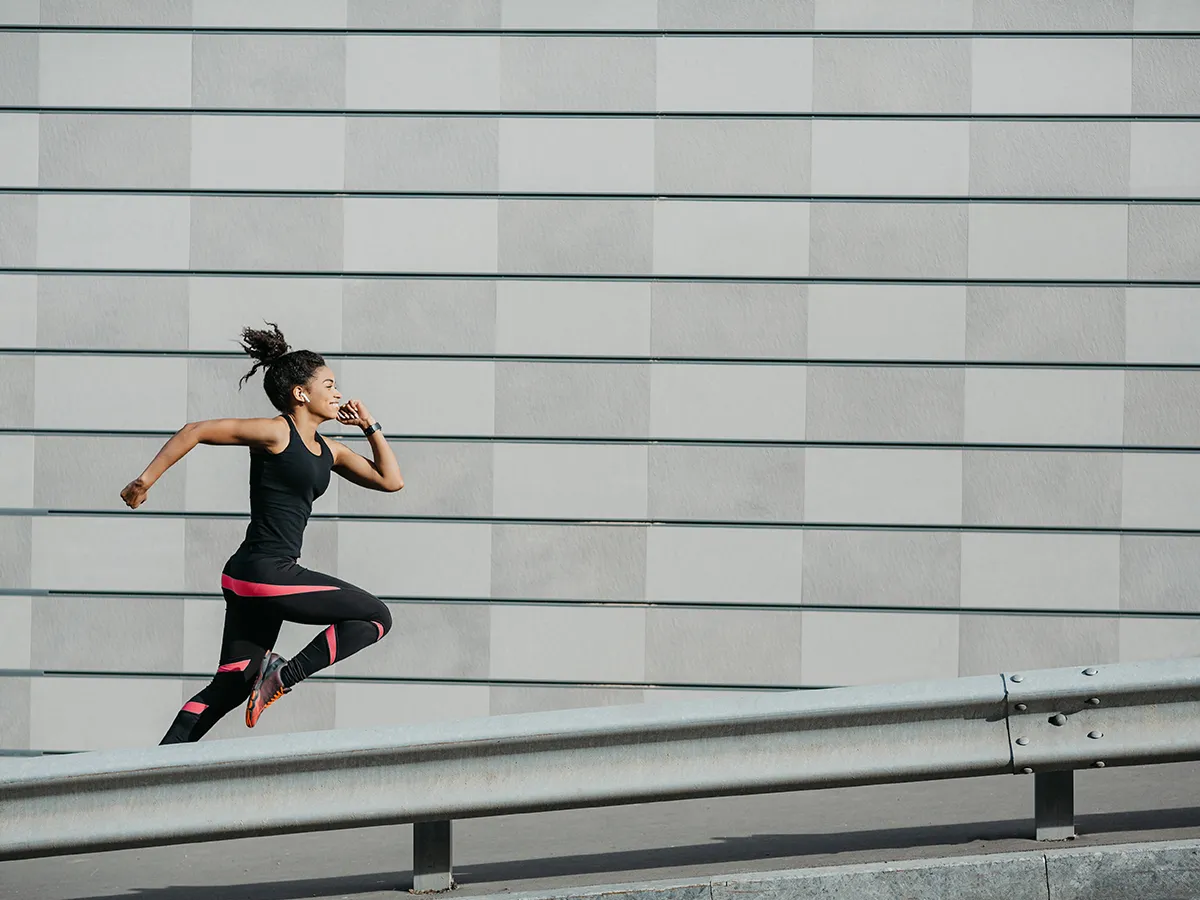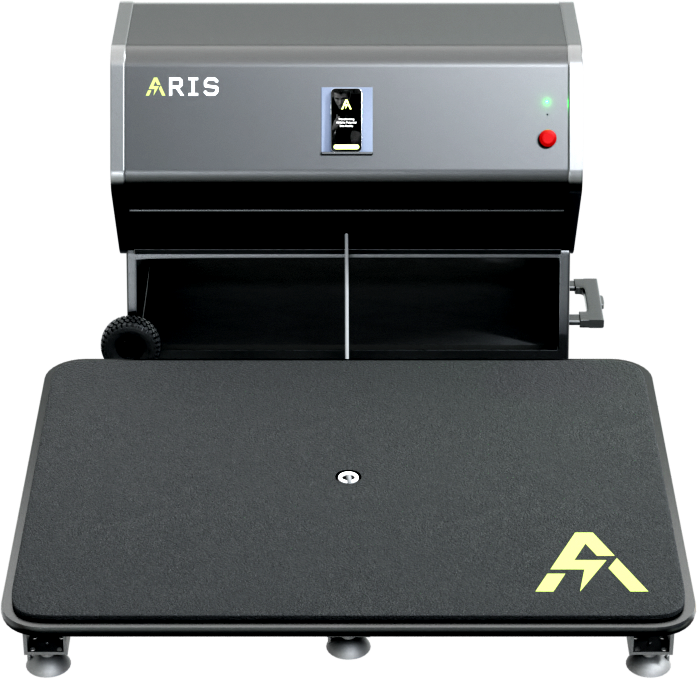10 Explosive Moves to Get Faster & Stronger
In the competitive world of sports, a split-second can make all the difference. Athletes from all disciplines continuously hunt for the perfect regimen to give them an edge, especially when it comes to power and explosive speed. For those seeking to elevate their performance, here are ten drills; each harnessing the power of explosiveness to increase speed.
What is Explosive Power in Athletics? 😏
Explosive power is the ability of an athlete to exert maximum force in minimal time. It’s not just about being fast or strong; it’s about combining the two.
In terms of running, this means powerful take-offs, rapid acceleration, and the strength to maintain top speeds. This combination of power and speed is crucial for athletes, whether they are sprinting towards a finish line or breaking away from a defender.
Your ability to explode your speed can be the difference between winning and losing.
Improve Your Input and Increase Your Output
Training for explosive power means pushing your limits. The more force/power and speed you input into your exercises, the greater your output will be when it counts. It’s about training smart, not just hard, and focusing on drills that simulate the rapid forward and backward sprints in your sport.
10 Explosive Running Drills to Get Faster and Stronger
The way you are going to improve your speed is by getting your reps in whether on the field or in the gym. These are a few of many explosive running drills we recommend to improve your power and speed.
Plate Jumps (For jumping, not speed)
This drill challenges your leg muscles, combining strength with dexterity. It’s also one of the most simple exercises you can do from home or at the gym. All you need is a bumper plate and a floor. The thicker the plate, the more intense the drill.
Standing with feet shoulder-width apart, simply jump on and off the plate as quickly as possible. Pair this as a TABATA exercise, and you will build agility and speed.
Why Plate Jumps? Plate jumps are going to target your hamstrings and calf muscles. While this may be a jumping movement, this is actually going to develop muscles that are required for explosive speed.

Carioca Drill (a.k.a Grapevines)
This dynamic exercise begins with feet hip-width apart and knees slightly bent. From there, begin moving to your right by crossing your left foot in front of your right foot, followed by stepping your right foot out to the right. Then, cross your left foot behind your right foot before stepping out with your right foot once again.
Keep repeating these lateral movements, crossing one foot in front of the other and alternately stepping out, all while staying in a low athletic stance. As you get more comfortable with the drill, you can increase the distance or time for the exercise, and eventually switch directions. This drill challenges your coordination and agility, helping you develop the speed and strength necessary for improved athletic performance.
Broad Jumps
Start in a deep squat, leap forward like a frog. This not only focuses on horizontal speed but also builds quad and glute power.
Your metric of improvement for this drill is increasing your distance from your starting point to your ending point.
Like Plate jumps, broad jumps are going to wear down your hamstrings and force yourself to drive yourself up with each movement. It’s imperative your quads and glutes gain muscle in order to drive explosive power.
Straight Leg Runs
Straight Leg runs are a powerful tool to supercharge your lower body speed and strength. Stand tall, shoulders back, and start to jog at a solid, moderate pace. Now here’s the twist: keep your legs straight, point the toes, and feel the burn as your hip flexors and hamstrings come to life.
Straight Leg runs are about fine-tuning your running game. Start with short distances or intervals, gradually increasing as your strength and technique improve, making them a valuable addition to your training routine.
Sprints with Resistance
Using a resistance running mechanism, such as a resistance parachute or sled, mark 25 yards. Start in a sprinter’s stance and sprint as hard as you can to your marked distance.
To measure your growth, it’s important to utilize a timer to start and end your run. For additional data on your sprint progress, you can also use ArisPro.
ArisPro is the first resistance training system with digital and constant resistance over the full span of long or short distance sprints. By using digital resistance and velocity metrics, ArisPro can set the exact resistance athletes need to consistently progress in their speed training.

A-Skip
Mastering the A-Skip drill is all about nailing that perfect form. Start by standing tall, relaxed but upright. As you begin to move, alternate your legs in a skipping motion.
Lift one knee up high while simultaneously driving the opposite arm up with a bent elbow. As you bring the knee down, switch to the other leg and arm. Keep the motion fluid and rhythmic, emphasizing the knee lift and arm drive to work on coordination, hip flexor mobility, and overall running form.
B-Skip
The B-Skip drill is a fantastic way to boost your running mechanics and agility. Begin in an upright and relaxed posture, with your core engaged. As you start moving, lift one knee while simultaneously flexing your hip and extending the opposite leg. As the lifted knee reaches its peak height, snap it downward, driving the opposite knee up in a high knee fashion. Swing your arms in sync with your leg movements, maintaining a brisk yet controlled rhythm. The B-Skip is a dynamic exercise that enhances hip flexor mobility, leg coordination, and overall running form.
High Burpees
If you’ve done a burpee, then you know they’re one of the most hated exercises an athlete can perform. Yet – it’s effective.
To enhance the effectiveness of the burpee, add a jump at the end to further engage your leg muscles and elevate your heart rate. No more “get the paper underneath.”
Single-Leg Step Up
Begin by standing in front of a sturdy platform and place one foot flat on the bench. Keep your chest up, engage your core, and maintain a straight back. Press through your heel as you push your body up onto the bench, fully extending your hip and knee, keeping your other leg off the bench and maintaining balance.
Slowly lower yourself back down, ensuring your working knee stays in line with your foot. Repeat for the desired number of reps, then switch legs. Single-leg step-ups are perfect for building leg strength, improving balance, and enhancing overall lower body stability.
Side Shuffle
To perform a side shuffle drill, start with your feet hip-width apart and knees slightly bent. Maintain a low and athletic stance with your chest up and your core engaged. Begin shuffling to the side by taking small, quick steps, leading with one foot and then the other.
It’s important to keep your steps light and controlled, and focus on maintaining a low center of gravity. This drill is great for improving lateral quickness, agility, and coordination.
Increase Resistance with ArisPro
Any workout can be enhanced by adding resistance to the mix. The greater the resistance, the greater the force that is needed to move the object – namely, you. We’ve developed ArisPro to easily adapt resistance to your performance and workouts to increase your explosive power.
However, it’s not the resistance that makes ArisPro so unique. Unlike RunRocket, that offers only speed training, ArisPro is the first resistance training system with digital and constant resistance over the full span of long or short distance sprints. By using digital resistance and velocity metrics, ArisPro can set the exact resistance athletes need to consistently progress in their speed training.



